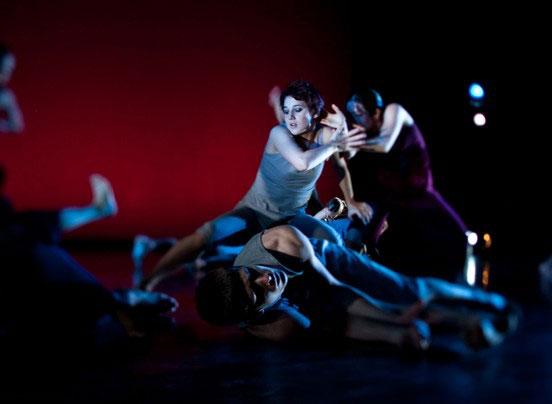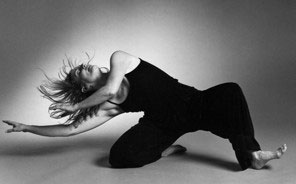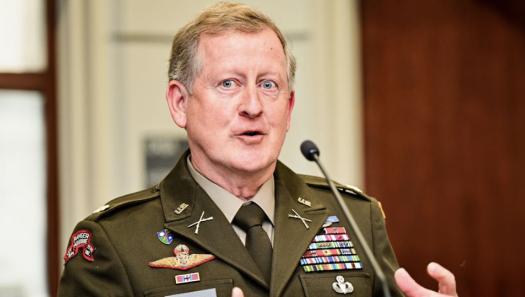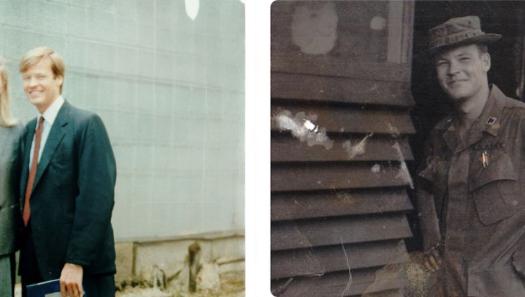Military & Veterans News
Cover Story: From Memoir of War and Loss, ‘Into Sunlight’ Seeks to Heal
Sarah Kaufman, Washington Post

Editor’s Note:
The following dance review – chronicling a series of historic events during the Vietnam War – appeared recently in the Washington Post, and included an interview with Veterans Advantage founder Scott Higgins, who continues the company’s sponsorship of the performance and the distribution of free tickets to Veterans Advantage “VetRewards” Card members. This review appeared ahead of the performance in Washington, D.C. earlier this month, and after Veterans Advantage’s sponsorship of the event in New York City during the summer.
In the bright daylight of Oct. 17, 1967, a U.S. infantry battalion known as the Black Lions marched into an ambush in the Vietnamese jungle that left 61 of its members dead. Just 20 miles away, a young soldier named Scott Higgins, who’d arrived in country a few days before, was celebrating his 22nd birthday.
Half a world away in Elmhurst, Ill., a girl named Robin Becker was also having a birthday — her 14th — amid an omnipresent fear that her two older brothers might be drafted.
And in Madison, Wis., on that same fall day, a University of Wisconsin freshman named David Maraniss, his eyes stinging from tear gas, was watching fellow students clash with police in a bloody protest against a company that was recruiting on campus: Dow Chemical, the makers of napalm.
Coincidence, fate, luck: Who knows what force of randomness or design brought these three people together decades later and connected their lives and the events of that day? But a portion of that connection will be on view Friday night at Georgetown University, where a dance called “Into Sunlight” will grapple with questions of history repeated. Is there a way out of destiny’s duet with humanity? Can we close the wounds opened in another age and re-inflicted in our own?
If the answers have eluded witnesses, historians and survivors, perhaps it’s too much to hope that art can shed any beam of light. But then, hope is a kind of connective tissue here, too.

University Department of Performing Arts) -
Founder and director Robin Becker, of
Robin Becker Dance, choreographs human
connections in piece at Georgetown
University
How it came together: After he left Madison, Maraniss went on to become a Pulitzer Prize-winning journalist. He wrote about the Black Lions ambush and the simultaneous campus demonstration in his 2003 book “They Marched Into Sunlight.” Becker became a dancer and moved to New York, where she founded her own company, Robin Becker Dance. A few years ago, as the wars in Iraq and Afghanistan wore on, she was casting about for a way to shape her unease into a dance.
“I just felt devastated that we were doing this in the 21st century,” she said, speaking recently by phone.
She had come to know Maraniss through a friend; after reading his book, she found her inspiration.
“I inhaled that book,” Becker said with a laugh. “I am too embarrassed to show David how I’ve destroyed his book with highlighting and commenting on the side.
“I was so deeply moved by it. I felt it paralleled so many of the same themes happening now: going to another country, all the young people dying, not having the whole nation on board.”
The book follows the entwined stories of American and Viet Cong soldiers, their families and the student protesters fighting their own battles back home.
“You really get the humanity of all of these players,” Becker says.
While Becker was working on the dance last spring, Higgins, the former soldier, happened to contact her about renting her house in Upstate New York. He lives in Connecticut, where he heads a group called Veterans Advantage, which arranges corporate discounts to Veterans.
They were excited to discover they shared the same birthday — and a history with the Vietnam War. Higgins was captivated by the idea of a dance depicting some of the issues he was still grappling with, such as post-traumatic stress.
“I’d find myself waking up in the middle of the night on the floor, hugging a bedpost and sweating,” he said. He ended up helping Becker fund the work and attended its premiere at the 92nd Street Y in New York. He also bought tickets for about two dozen fellow Veterans. He’s doing the same for performances of the work here.
Higgins said he was skeptical at first that Becker’s 16 dancers “could communicate the range of feelings through dance of an action that was so dramatic,” he said in an interview Thursday. “But I think at one point there wasn’t a dry eye in the place.”
Equally valuable, he says, is how the dance prompts connections of its own, with feelings that may be deep below the surface. He saw this in discussions among the Veterans and other audience members at a reception after the New York premiere.
“I think talking helps,” he said. “It takes away the stigma. After Vietnam, there were no parades. People have wanted to forget about it, but they’ve realized that was a mistake.”
Maraniss, a Washington Post associate editor, will introduce the dance at Georgetown’s Davis Performing Arts Center and lead a panel discussion afterward. He will also introduce one of the main characters in his book: Clark Welch, who survived the ambush and will be seeing the dance for the first time.
Like his book, he said, the performance tells “a sadly universal and timeless story.”
“We’ve been dealing with that since the Greeks,” he said. “I’m not sure we ever totally learn.”
Becker, 58, has never made a dance about war before, but she has long been interested in trauma and healing. This is because of her own tragedy: 14 years ago, her husband went out for a jog and dropped dead of cardiac arrest. He was an architect, and at the time they were building a house in the country, which he had designed - the house that Higgins had briefly rented.
To help move past the loss, she immersed herself even more in dance — into the realm of images, where she could take the time to feel. This is what she hopes to share in “Into Sunlight.” The dance is an accumulation of images, she says: the boat that took soldiers across the ocean; the dead who haunt them. The sister of a soldier dreams that her brother comes to her with a hole blown open in his gut; this happened the night before the ambush, and later the sister realizes he came to say goodbye. A football star runs from his chopper to help the wounded at the ambush site and is cut down by bullets.
“People don’t take the time to feel,” she said. “The feeling capacity of the body is very slow, and we’re going faster than our thoughts.”
One way to slow down, and even to heal, she says, is to sit in the darkness with an unfolding tableau, which just may help bring emotional truths to light.


